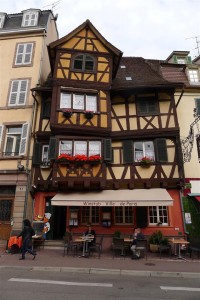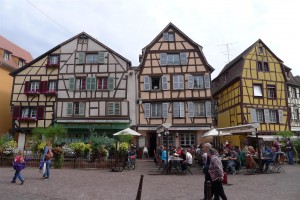Our hometown of Walpole, New Hampshire sets a high bar when it comes to Halloween. Many people decorate their houses, some of the parents dress up, and the village is swarming with elaborately-costumed kids. Typically I will don a simple costume and man our front porch with a mechanical skeleton that declares: “Do not be afraid!” Most kids aren’t. One year we had so many trick-or-treaters that I ran out of candy, and had to replenish our bowl with treats that Mamta had gotten at other houses. While I am meeting and greeting kids at the front door, Annette hosts our adult guests back in our kitchen, treating them to mulled wine and Hungarian goulash (ghoulash?) soup.
I could tell from the lack of build-up that Halloween was not going to amount to much here in Berlin. A week ago I saw in our local office supply store a small display of plastic pumpkins and miscellaneous spooky trinkets. When I returned there today to buy the one witch hat I had seen, the entire display was gone, replaced by Christmas decorations. But it’s only Halloween!


